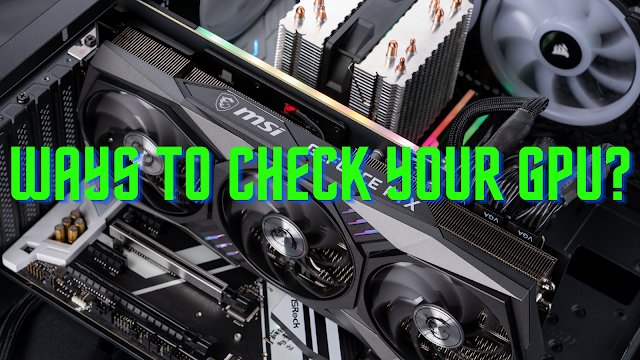
Finding out what graphics card you are using can help you troubleshoot any possible issues with your visuals. If you are asking “ What GPU do I have in my PC?” There are actually several easy ways to check your graphics card and its specs.
But first, let us define what a GPU is and what its role is in your PC.
What is a Graphics Processing Unit (GPU)?
Graphics Processing Unit (GPU) or most commonly called a graphics card is a component in your computer responsible for video and graphics rendering especially 3D graphics applications in real-time. It is widely known for its gaming capabilities but nowadays is becoming more popular for creative productions as well. Creating visual effects, lighting and shadowing techniques, and other visual creations that are programmable are now extensively applied using GPU. It’s a faster and easier way to render videos and graphics in high-definition formats and faster frame rates which makes it ideal for video editing, photo editing, content creation, graphics designing, and other digital creative works.
How to Check What Graphics Card (GPU)
Now that you know what a GPU is and what it’s for, it’s time to check what GPU your computer uses. Depending on your OS, steps in checking your GPU may vary. Here are the easiest and fastest ways to know your GPU
Windows:
Right-click on the taskbar and select “ Task Manager” to open.
Once the window pops up, click on the “ Performance” tab at the top row of your Window.
A list of running applications and cards will be shown on the display window.
Simply select the GPU tab to find out the GPU provider and its model code. See more information such as utilization percentage, dedicated GPU memory, GPU memory, and Shared GPU memory.
macOS:
Click the Apple logo at the top-left corner to open the dropdown.
Click on “About this Mac”
A window will pop up showing you the details of your Macbook computer. You will find the version of your macOS, model, processor, memory, serial number, and the GPU.
Linux:
For working GUI:
Install a system profiler app (hardinfo, Gnome, etc) on Ubuntu, Debian, or Linux Mint desktop
Once the program window pops up, navigate the “Settings” and click on the “About” tab. Details of your PC will be shown such as memory capacity, processor, graphics, and disk capacity.
If you are using other profile apps, go to “Devices” and click on “PCI Devices” and click on “VGA compatible controller”
For PC Commands
lspci command
Note: Make sure that your PCI ID list with the latest version
Type in $ sudo update-pciids
Then, type in the following command to show the model name of your video card.
$ lspci | grep -E "VGA|3D"Once the PCI ID of your card is identified, type in the command to get more info about your card.
$ sudo lspci -v -s (insert PCI domain ID)
The lshw Command
Open command prompt. “Type in sudo lshw -numeric -C display”
The command will set your PC for its physical hardware and display them such as description, product model, vendor, physical ID bus info, clock, capabilities, and configuration.
GPU is a really important part of a computer. It boosts your computer’s visual performance and graphics. We are not just talking about gaming. Creative contents, filmmakers, writers, photographers, and other digital creatives use powerful GPUs to provide speedy and high-performance output that we commonly see in photos, videos, video games, and more.
Great article that should help beginners figure things out!
ReplyDeleteWhat is your opinion on AMD's GPUs? And I'm not thinking just about their top-tier models, but also about their APUs which have offered the opportunity to play video games and do video editing to people who otherwise wouldn't afford it. I love this approach from AMD and I hope Intel comes up with something similar soon.